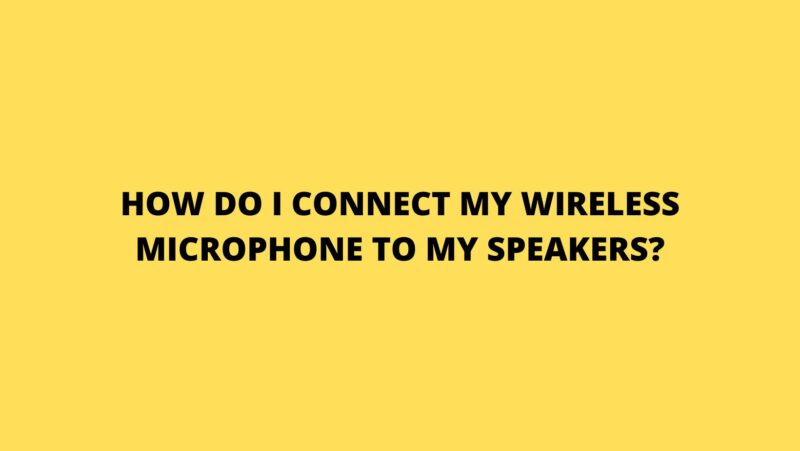To connect a wireless microphone to your speakers, you will need the following:
- A wireless microphone system: This includes a transmitter and a receiver. The transmitter is connected to the microphone, and the receiver is connected to your speakers.
- Speakers: These can be active speakers or passive speakers with an amplifier.
Here are the steps on how to connect a wireless microphone to your speakers:
- Turn on the power to the wireless microphone system.
- Connect the transmitter to the microphone.
- Connect the receiver to your speakers.
- Select the input for the wireless microphone on your speakers.
- Adjust the volume of the wireless microphone on your speakers.
Here are some additional information that you may find helpful:
- The type of wireless microphone system you use will determine the type of connection you need. Most wireless microphone systems use either a UHF or a VHF frequency band.
- The receiver should be placed as close to the speakers as possible to avoid signal loss.
- You may need to adjust the gain on the receiver to get the best sound.
- If you are using active speakers, you will not need an amplifier.
- If you are using passive speakers, you will need an amplifier that has an input for the wireless microphone.
Overall, connecting a wireless microphone to your speakers is a relatively simple process. By following these steps, you can get your wireless microphone up and running in no time.
Here are some additional tips for getting the best sound from your wireless microphone:
- Use a good quality wireless microphone system. A good quality microphone system will produce a better sound than a cheap microphone system.
- Place the microphone correctly. The position of the microphone can have a big impact on the sound. Experiment with different placement to find what sounds best to you.
- Avoid obstacles. Obstacles, such as walls and furniture, can interfere with the signal from the wireless microphone.
- Use a directional microphone. A directional microphone will pick up sound from a specific direction, which can help to reduce feedback.
- Turn down the gain. If the gain is too high, it can cause distortion.
- Use EQ. EQ can be used to adjust the sound of the microphone. Experiment with different settings to find what sounds best to you.
With a little practice, you will be able to get great sound from your wireless microphone and your speakers.
I hope this helps! Let me know if you have any other questions.
Here are some additional things to consider when connecting a wireless microphone to speakers:
- The power output of the wireless microphone system: This should be matched to the input sensitivity of the speakers.
- The impedance of the speakers: This should be matched to the impedance of the wireless microphone system.
- The frequency response of the speakers: This should be compatible with the frequency response of the wireless microphone system.
By considering these factors, you can ensure that your wireless microphone system and speakers will work together seamlessly.


